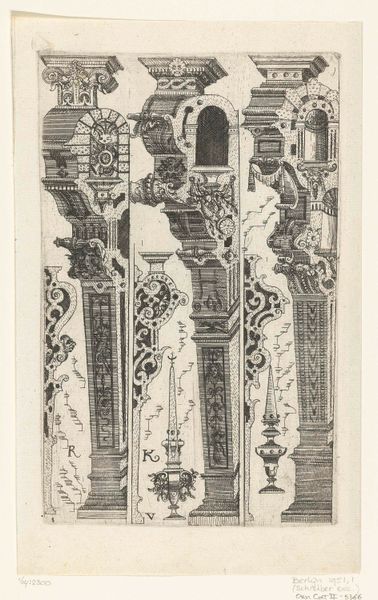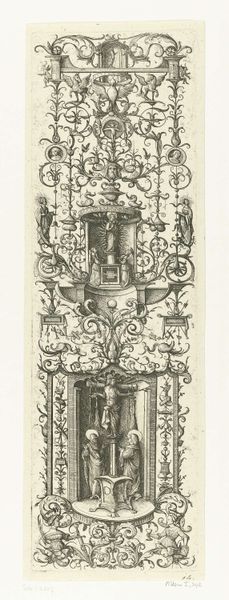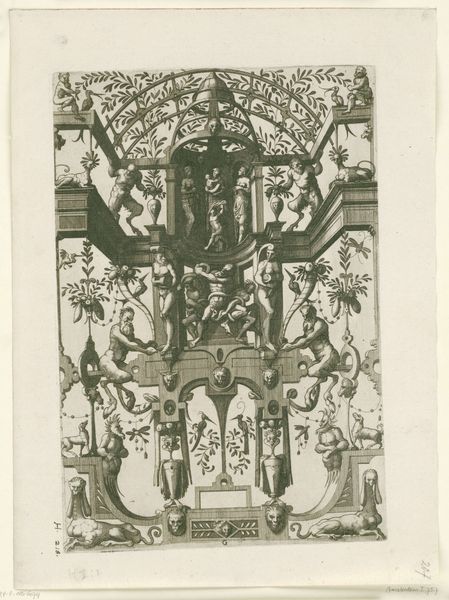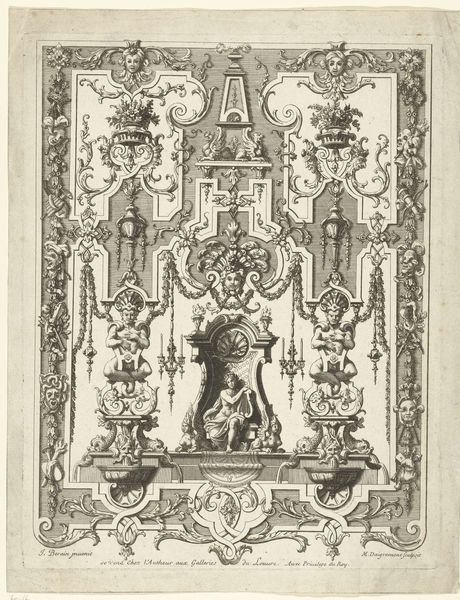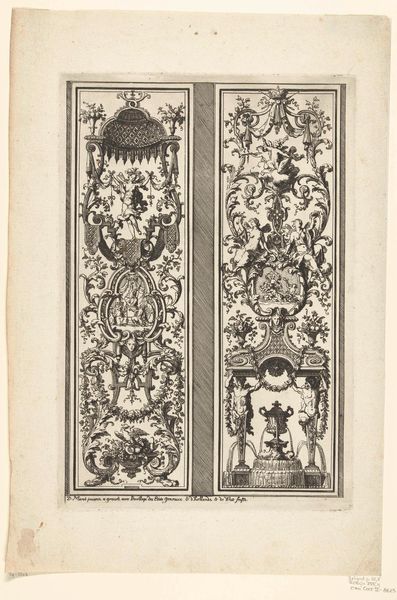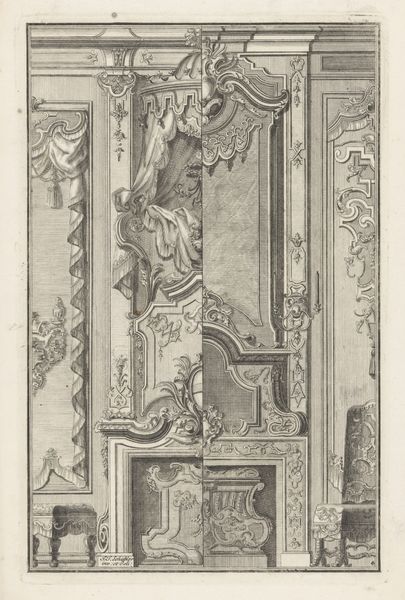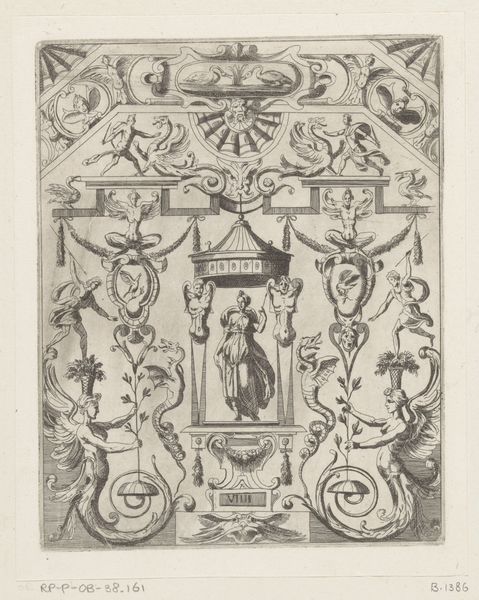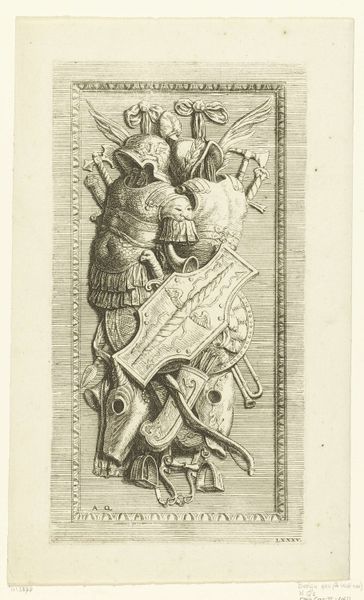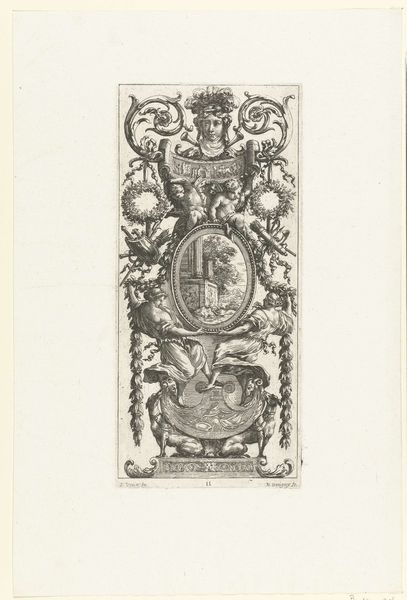
print, etching
#
baroque
# print
#
etching
#
old engraving style
#
history-painting
Dimensions: height 205 mm, width 126 mm
Copyright: Rijks Museum: Open Domain
Editor: Here we have a print called "Term eindigend in vrouw met druiventrossen," which translates to something like “pillar ending in a woman with grapes,” created in 1622 using etching. Looking at it, I'm struck by the almost architectural quality. The starkness of the black and white against the complex designs creates a really intriguing contrast. What do you make of this piece? Curator: You’re right, it does feel architectural, almost like a blueprint for a fantastical building. The woman emerging from the pillar feels both powerful and constrained, doesn't she? The grapes suggest abundance and fertility, but also, perhaps, a sort of entrapment. I wonder, did this artist ever imagine his designs in grand estates or humble homes? Did they dream of their designs gracing palatial homes? This begs a greater question: do ideas belong more to the creator, or to the appreciator? Editor: Entrapment… that's interesting. I was so focused on the classical elements and decorative details I didn't consider that reading. Curator: It's easy to get lost in the details! Look closer – those grapes aren't just a symbol; they’re physically weighing her down, part of her very structure. Now, isn’t there an irony there? That which symbolizes life is now her prison. Editor: Wow, I hadn’t thought about it that way! This has been very illuminating and gives me so much to consider, it goes well beyond the visual ornamentation of the piece itself. Curator: Precisely, and hopefully opens a door in the labyrinth of your own thinking on similar artworks, perhaps in ways that are also constricting. I certainly look forward to revisiting my original assumptions next time I return.
Comments
No comments
Be the first to comment and join the conversation on the ultimate creative platform.

